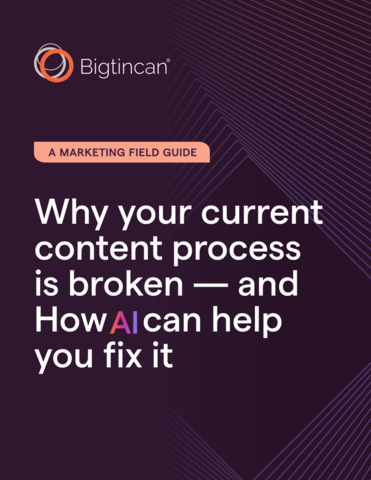Pragmatic AI implementation

Sandy Kahrod at Six Degrees describes how to move beyond the hype with AI
AI is the buzzword on everyone’s lips — but how many can truly say they fully understand its capabilities, development, and value? Indeed, the technology is changing so fast that many organisations remain unsure of how to approach it, resulting in short-sighted decision-making that overshadows long-term planning. The big problem with this situation is that businesses risk missing out on the capabilities of AI implementation and getting left behind in the race to innovate.
As a result, there is a need for a reality check, with some useful history lessons to draw on. For those who witnessed the explosive growth of cloud computing in the early 2000s, there are various parallels with AI today. Just like GenAI, early cloud computing technologies also promised transformational benefits, including unlimited scalability, cost savings, and simplified IT infrastructures, among many others.
Businesses across the economy jumped on the cloud bandwagon, many without fully understanding where to focus their time and technology investment. Getting to the cloud was the primary objective, with organisations trusting in the technology to deliver business benefits. Fast forward several decades and cloud is a massive global success story, but many organisations learnt the hard way that aligning objectives with outcomes requires more than adopting the first technology that comes down the road.
A great example comes from a Computer Weekly story from August 2010, which shows how the perception of transformative technologies can change over time. Under a headline reading, “Don’t buy cloud computing hype: Business model will evaporate”, the article argued that “thanks to compliance issues, cloud computing will never get off the ground for commercially viable companies, and cloud providers will evaporate.”
Smelling the coffee
Today, we know the reality to be completely different, but comparing that situation to GenAI’s current position shows businesses are subject to a similar cycle. With the benefit of hindsight, it’s easy to see how cloud went from massive hype to deep scepticism before maturing to mainstream adoption and, ultimately, becoming a pillar of modern enterprise IT. In the case of AI, almost everyone is urgently rushing to implement solutions, driven by the promise of new success and fear of missing out in equal measure. The problem is that many lack a clear strategy, resulting in disjointed implementations and unmet expectations.
So, what should be happening instead? Firstly, organisations must define their AI and data strategy now, or their fear of being left behind is likely to become a reality. Even if business value won’t be realised immediately, the conversation must start today. Planning must also be agile and dynamic because technology and market dynamics are evolving too fast for rigid multi-year implementation strategies.
Then, there are the technical realities to consider. Many organisations have underinvested in their data platforms and foundations, hindering their ability to leverage data effectively. Whether it’s data quality issues, siloed data resources, inadequate governance, or a myriad of other potential shortcomings, enterprise data is often not in a state that supports effective AI adoption.
Elsewhere, legacy systems and infrastructure can easily lead to compatibility issues and the need for significant upgrades or wholesale technology replacement. Outdated infrastructure may not be able to handle the computational demands of data and AI applications while also being significantly more vulnerable to the new breed of cyber-attack strategies that have grown alongside the AI industry.
AI skills and experience are also at a premium – a situation which is hardly surprising given the nascent state of the industry but still something that can stand in the way of success. In many organisations, there is also understandable resistance to change, and whether that takes the form of employee pushback or lack of executive sponsorship, the impact can be equally damaging.
Laying the foundations
The challenge for organisations today isn’t just whether to adopt AI but how to do so in a way that delivers long-term business value instead of short-term box-ticking. A critical starting point is recognising that AI success hinges on organisational adaptability rather than just technical insight. Businesses that struggled with cloud adoption 15-20 years ago often did so because they treated it as a technology project rather than a business transformation – a failing that is likely to be repeated in the years ahead.
Today, AI presents an even more significant challenge because it requires continuous iteration – there is no fixed endpoint where an AI strategy can be considered “complete.” Instead, companies must develop a fluid approach to AI integration, where experimentation, refinement, and scalability are built into the adoption model.
Another key consideration is the shift from cost-driven decision-making to value-driven AI adoption. Many organisations approach AI with an efficiency mindset, where the core requirement is to automate tasks and reduce costs. In doing so, they don’t fully consider its potential to unlock new revenue streams or create entirely new business models.
Ultimately, the companies that match hype to reality are those that treat AI as an investment in transformation rather than just a tool for operational efficiency.
Sandy Kahrod is Modern Work Product Manager at Six Degrees
Main image courtesy of iStockPhoto.com and Just_Super

Business Reporter Team
You may also like
Most Viewed
Winston House, 3rd Floor, Units 306-309, 2-4 Dollis Park, London, N3 1HF
23-29 Hendon Lane, London, N3 1RT
020 8349 4363
© 2025, Lyonsdown Limited. Business Reporter® is a registered trademark of Lyonsdown Ltd. VAT registration number: 830519543





